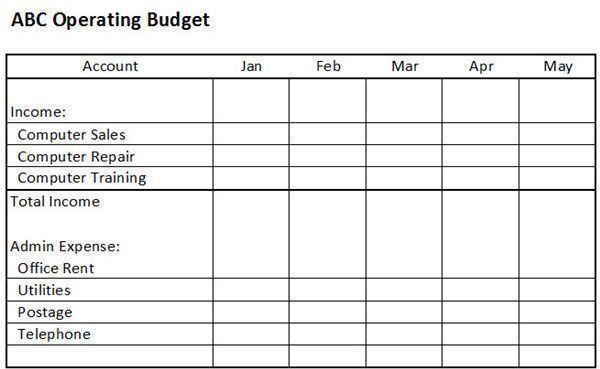The Savvy Business Owner's Steps in Preparing an Operating Budget
Design a Budget Template
You can create a budget template using spreadsheet software or manually, using a columnar pad. Across the top of the template in separate columns, designate the account name, each month of the operating year and a total column at the end. In the first column, list every income and expense account included on your income statement. Leave space for subtotals for income and operating expenses as they are grouped on your income statement.
Identify Fixed Budget Amounts
One of the easiest steps in preparing an operating budget is creating the budget for fixed account expenditures. Accounts with fixed expense amounts include items such as rent or mortgage payments and leases for business equipment. For items that have periodic increases in expense amounts such as rental agreements or items that have changes in the breakdown of expense such as mortgage payments, pull your original expense documents to ensure you budget the correct amount of expenses for each fixed category.
Overhead Expenses
Overhead expenses are expenses that exist regardless of the level of business operation and do not shift proportionately with revenue. For example, a utilities expense is usually an overhead expense unless your business involves manufacturing or other use of utilities in order to generate revenue. In the case of expenses not tied to revenue, you should determine the increase or decrease of the expense category from each month to the next for the previous 12 months of operation.
Calculating these increases should give you an indication of the trend of the expense. If the expense is increasing at a rate of 10 percent over a year, take your last full month of operating expense for that category and inflate it by 10 percent to determine the next year’s expense. If an expense increases by a common inflation rate each month, take the last full month of operating expense for that category and inflate it by the average amount for each month of the budget year.
Revenue
If you are not planning large-scale changes to your revenue stream such as offering new product lines or a big marketing campaign, you can use the trending approach to estimate revenue. If you have a seasonal business, it is important for you to correctly budget the increases and decreases due to the time of year.
If you have large-scale changes planned, attempt to attach a percentage value to the change. For example, you may elect to budget a 10 percent increase in revenue due to a planned change in operations.
Expenses Tied to Revenue
If you do not have a large-scale change planned, expenses tied to operations should increase incrementally along with revenue. If you plan a large-scale change in operations, you should increase expenses tied to revenue by the same incremental amount as the increase to revenue. Because of the fluxuation of costs and the many variables involved with business expense, estimating operating expense is one of the more difficult steps in preparing an operating budget.
References & Photo Credit
Reference:
“Principles of Accounting”; A. Douglas Hillman, Richard F. Kochanek, Corine T. Norgaard; 1991
Image by Kaye Morris
